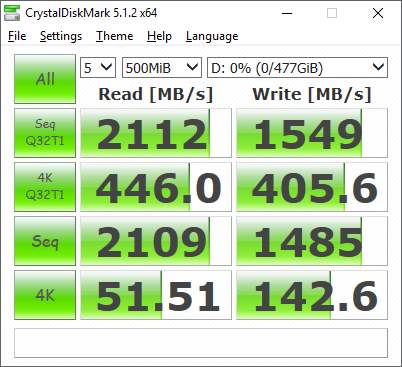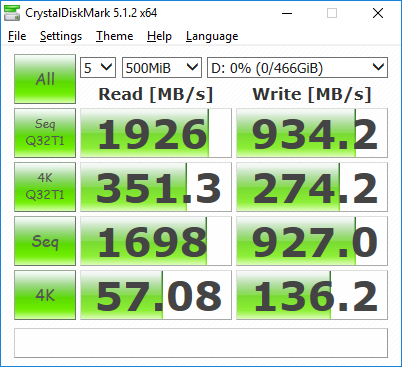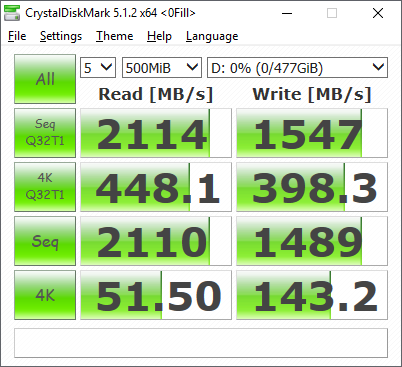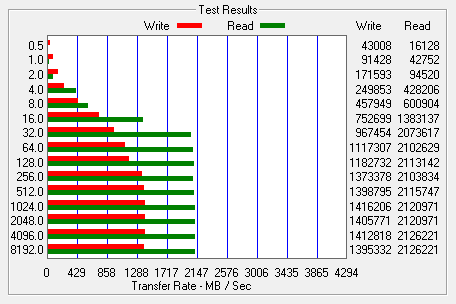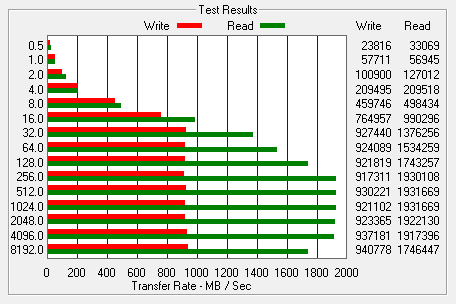The test system used in this review is equipped with an Intel Core i7-6700K CPU, GIGABYTE GA-Z170X-UD3 motherboard, 32GB (16GB x 2) of Crucial Ballistix Sport LT DDR4 memory, Samsung 960 PRO 512GB SSD and a GIGABYTE GeForce GTX 1060 WINDFORCE OC 6G graphics card. For the operating system, I installed a fresh copy of Windows 10 Enterprise.
To test the performance of ADATA's XPG SX6000 Pro SSD, I ran a series of benchmarks using CrystalDiskMark, HD Tach RW, ATTO Disk Benchmark, AS SSD, HD Tune Pro, Anvil's Storage Utilities, Iometer and PCMark 8. For comparison, I've also included test results from the Western Digital WD Black SN750, Samsung 970 EVO Plus, ADATA XPG SX8200 Pro, Crucial P1, ADATA XPG SX8200, Western Digital WD Black NVMe, Samsung 970 EVO, Samsung 970 PRO, Plextor M9Pe, Plextor M8Se, Patriot Hellfire, ADATA XPG SX8000, Samsung 960 PRO, Toshiba OCZ RD400, Samsung 950 PRO, Samsung 860 QVO, Samsung 860 PRO, Crucial MX500, Plextor M8V, Samsung T5, Crucial BX300, ADATA Ultimate SU900, Plextor S3C, Toshiba OCZ VX500 and ADATA Ultimate SU800.

As I mentioned earlier, the XPG SX6000 Pro is based on Realtek's RTS5763DL controller chip. Looking at the screenshot above, you can see that it performs equally well with both incompressible (0%) and compressible (100%) data.
CrystalDiskMark 5.1.2:
First, I ran a few quick tests using CrystalDiskMark. This benchmark tool measures the performance of a storage device by testing its sequential read and write speeds as well as its random read and write speeds using blocks 512K and 4K in size.
According to ADATA, the 512GB version of the SX6000 Pro is capable of reading at 2,100 MB/s and writing at 1,500 MB/s when tested with CrystalDiskMark. Looking at the screenshot above, you can see that the drive had no problems reaching these speeds in the sequential read and write tests.
The SX6000 Pro performed equally well when using highly compressible 0x00 (0 Fill) data. This time around, the drive was able to read at 2,114 MB/s and write at 1,547 MB/s.
HD Tach RW 3.0.4.0:
Next, I used HD Tach to test the SX6000 Pro's read, write and burst speeds as well as its seek times and CPU usage.
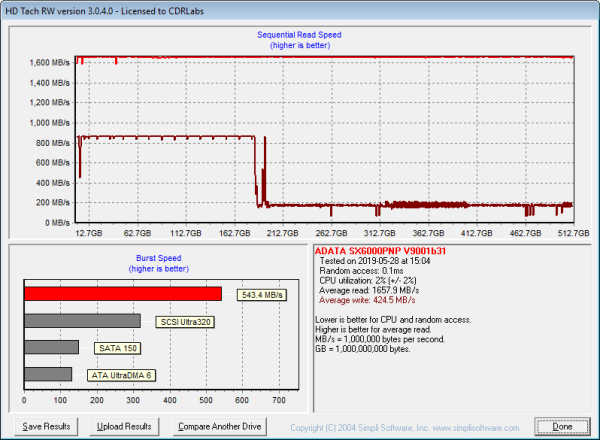
Looking at the screenshot above, you can see that the SX6000 Pro had average read and write speeds of 1657.9 MB/s and 424.5 MB/s respectively, as well as a burst speed of 543.4 MB/s. The screenshot also shows that, like most other TLC-based SSDs, the SX6000 Pro uses some sort of SLC caching. The drive starts writing at about 900 MB/s and then drops to about 200 MB/s when the write operation exceeds the size of the cache.
ATTO Disk Benchmark 2.46:
I also used ATTO Disk Benchmark to test the SX6000 Pro's sequential read and write speeds. The tests are run using blocks ranging in size from 0.5KB to 8192KB and the total length set to 256MB.
When tested with ATTO, the SX6000 Pro's read speeds topped out at about 2,126 MB/s and its write speeds at 1,416 MB/s.


